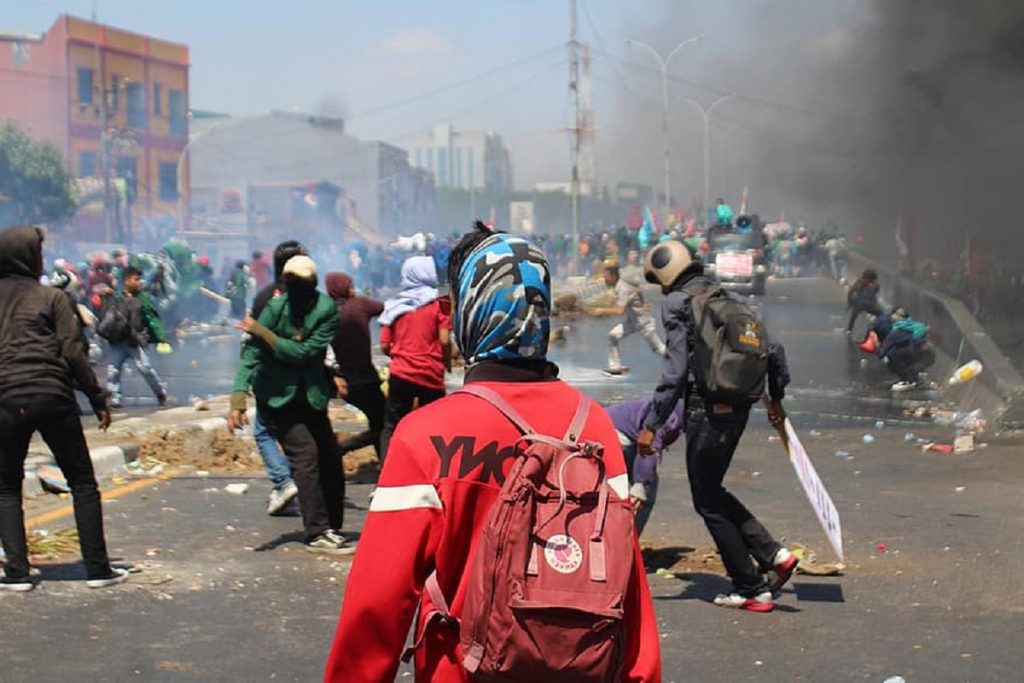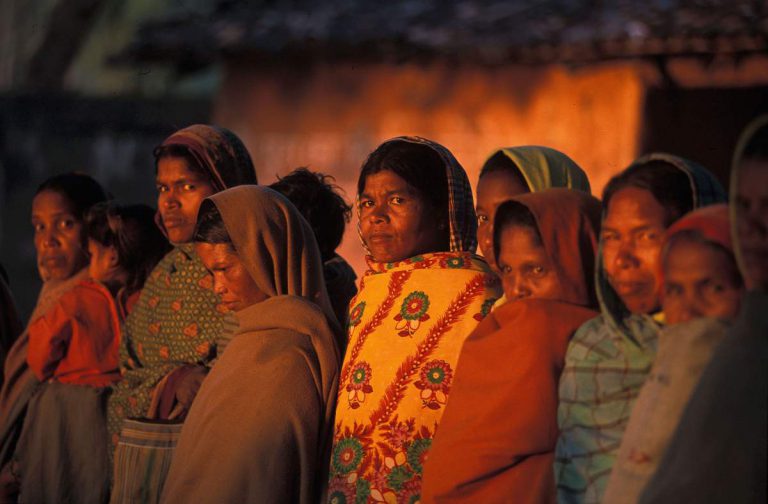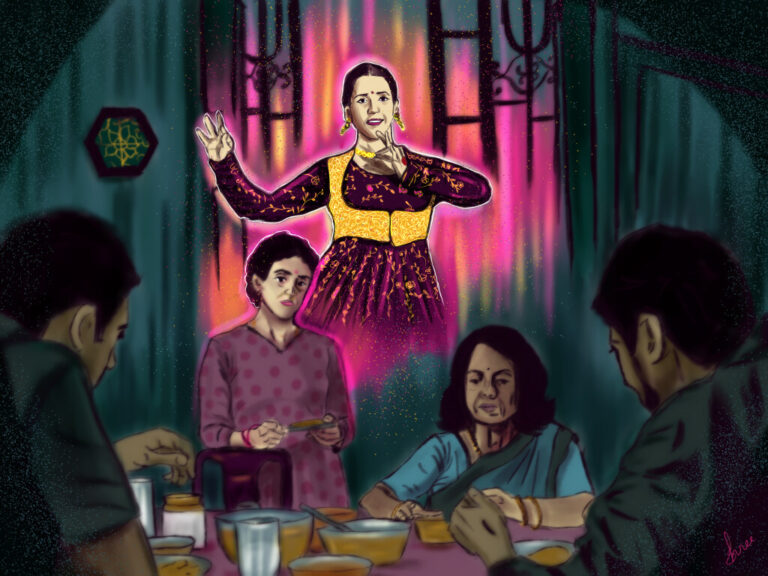Violence and caste terrorism in India

[responsivevoice_button voice=”US English Female” buttontext=”Read out this Theel for me”]
Terrorism is irrefutably a crime, and terrorists are criminals. However, it should be seen that what is viewed as an act of terrorism in one country is viewed as an act of patriotism in another depending upon the ideological commitments of that nation. The issue of terrorism is an old one, but challenges are new. It has radically influenced the world economy and the life of the individuals and is a revile on humanity. This insanity is disseminated by fanatic acts of unstable barbarians who do not care about humans and human rights. Innocent people who do not have any connection or information about terrorists have lost their lives in terrorist attacks. We are facing this threat of terrorism in India for a very long time.
Today, terrorism is viewed as an issue fit for subverting national as well as international politics. However, the worst form of terrorism in the Indian context is the caste system, as it is so profoundly established that even atheists follow it. Democracy is hugely challenged by the caste system, and it is a power that, till date, could not be constrained by any laws or awareness programs. We are on a threshold of an age-old debate of caste in a profoundly altered historical setting both at home and globally. The Dalits and the other lower classes are constantly subjected to acts of brutality and terror. Entire communities face constant humiliation and a developing disintegration of their identity and fragmented sense of being part of the civil society, nation, and the state. Today the caste oppression has taken a psychological turn with fear, anxiety, threats, and a sense of inferiority being labeled in the mind of the victims of caste violence. There is a constant sense of fear of extermination and exclusion among them. Centuries of oppression have inflicted deep psychological wounds in their minds. Ex- Dalit women are stigmatized both for their caste and gender identities and face double-oppression, which has put a permanent mark on their minds. However, the psychological dynamics between the victims and perpetrators of caste violence have opened up a new field of research that needs to be dealt with separately.
Understanding caste
Caste indicates a conventional system of rigid social stratification into classified groups characterized by lineage and profession. Caste is not merely an institution that characterized the structure of social stratification. It is both an institution and an ideology. Institutionally caste provided a structure to arrange and organize social groups according to their status in the socio-economic hierarchy. As an ideology, caste is a system of values that legitimized the present hierarchy of social disparity. Caste is the embodiment of conventional society where people did a similar sort of work and lived similar sorts of lives. Unequivocally, there are six features of the Hindu caste system, namely, hierarchy, limitations on social interaction, civil and religious incapacities, absence of an unhindered choice of profession, and limitations on marriage. The idea of caste has been acutely entrenched in the modern Indian self-image, which is an impression of the orientalist and colonial images of India. Caste was encountering a ‘horizontal consolidation,’ which implies that the more caste is getting politicized, the more competition is getting conspicuous among the other castes, which in the end debilitated the ‘vertical consolidation’ of caste. Subsequently, caste is remaining in the society. (Jodhka, 2010)
Causes of caste terrorism
The privileged India has been compelled to take acquaintance of the ‘Other’ India as a result of a progression of events that occurred. The lower castes were treated as slaves catapulted by debased religiosity and a feeling of physical aversion against the oppressed. Endeavors were made by numerous individuals to split away from the fetters of religion. The Sanskritization process by which the lower castes embrace the acts of the upper castes has strengthened caste identities as it does not challenge social hierarchies. Fear has enslaved a number of individuals who are set in the lower rungs of society. Individual identities are influenced by migratory flows to urban cities looking for better prospects. The powers of globalization are modifying social relations. However, the fact cannot be disregarded that a society which is isolated along caste lines; capitalism totally distances an entire set of individuals who do not have any role in the profit making process. Education, which was an instrument of empowerment, was seen as the domain of the few. It was used as a device of ideological hegemony. It was the Brahmins who benefitted from the educational opportunities in India. Educational prospects were not meant for the lower castes. The market forces post-1990s have contributed to the debilitating and fortifying of caste identities.
Emergence of caste terrorism
The focus of the world has been turned towards the savagery of Islamic fanaticism since 2001, but there are major fierce patterns in Hindu radicalism as well that have been overlooked. In India, this brutality is bolstered by Hindu radicals and their allies. India is certifiably not a religiously reactionary state like Saudi Arabia or Iran and experiences its own dangers from Islamic aggressors in Indian controlled Kashmir as well as Islamist terrorist attacks throughout the country, most notably the theatrical attack on the Indian parliament in 2001. The merciless viciousness on Muslims in Gujarat in 2002 carried the threats of Hindu fanaticism to world consideration. These assaults were not rudimentary mob savagery; rather, they included cautious planning by organized Hindu radicals with a developed religious-nationalist ideology. Like the ideology of Al Qaeda and other radical Islamists, this fanatic philosophy started to develop during the 1920s. It articulates the Hindutva philosophy intended to safeguard the prevalence of Hinduism in Indian society, which is advanced through violence and terror. It has been observed that many lower caste Hindus have opted for conversion in order to escape from their religiously defined plight. In 1981 around 1000 Dalits converted to Islam in Tamil Nadu (Meenakshipuram). Such conversions disintegrate the strength of the higher caste Hindus. In this way, India’s tolerant and pluralist democracy is compromised by the development of brutal Hindu nationalism. (Marshall, 2004)
The hindutva ideology and it’s systematic perpetration of caste violence
The term ‘Hindutva‘ is derived from the two terms Hindu and Tattva, which actually signify ‘Hindu principles.’ Vinayak Damodar Savarkar (1883-1966) was an advocate of Hindutva ideology. The majority of Hindus were considered as the true nation and the minorities an entirely different race. It is a subsidiary attestation that Hindus were the genuine sons of the soil. Their ideology depends on three Hs, “Hindi, Hindu, Hindustan,” and its members had to share a mutual language, religion, and origin. It has come to the degree of distancing the minorities from the mainstream by oppressing, vilifying the other and denying the right of existence through the tactics of stigmatizing, demolition and destruction of the worship place and numerous other remarkable demonstrations. Strategically, it has come to the degree of power seizure in the central government, and culturally it is isolating the minorities as outsiders, and subsequently, they are considered as aliens. The ascent of Hindutva ideology and its execution have sparked off conflicts in the entire nation with an anti-western, dogmatic, and in some cases, vehement cultural and religious contentions. However, the condition in India today is that the majority religion more ardently places its assertions of majoritarianism and the rights to administer over the minorities. Although Hindu cultural Nationalism was created as a philosophy in the later nineteenth and early twentieth century, it assumed a clear ideological shape in the 1920s. There are certain driving forces embraced by the Hindutva leaders which mirror the developing perils of Hindu fanaticism in India. (Imsejungba, 2016)
The caste system is the oldest surviving social hierarchy in the world, and the worst victims of this caste system have been the Dalits. They are considered as the outcastes, polluting elements, and the untouchables. Although the practice of untouchability has been abolished, it is just a constitutional exercise because still now they are segregated along those lines. Dalits are confined to specific occupational structures according to their socio-economic status in the caste hierarchy. They are relegated to menial jobs like manual scavenging as a result of which a particular percentage of Dalits die every day. Over the years, Dalits were forced to stay in segregated colonies away from the upper caste Hindus. Ex- In the Villupuram district of Tamil Nadu, 120 villages have segregated Dalit colonies. They were forbidden from drawing water from the same places as the upper caste Hindus take from. Their food, medical supplies were all segregated. Dalits faced acute humiliation and violence from the upper castes in rural areas. In the Marama village festival of Karnataka, Dalits were forced by the upper caste Hindus to sacrifice buffalos and drink their blood. Then they were forced to mix the blood with cooked rice and run in the village fields without their chappals. Today as well, it is evident that crime against Dalits are increasing with Dalits being tortured, assaulted, and killed every hour, but not all are reported. In 2017, in the Thati village of Uttarakhand, a group of upper-caste men assaulted a Dalit man and scalped him violently only because he demanded his legit dues that were pending. Again, it is very surprising to see that the educational spaces of India are not sensitized enough to reject such caste violence as it was seen that in 2019 a Dalit Sanskrit professor of Benaras Hindu University (BHU) was assaulted by the students just for supporting the appointment of his Muslim colleague.
Today many would say that the systematic discrimination against Dalits is weakening as it can be observed that we have a Dalit President, which indicated a step towards establishing a polity free from the tyranny of the caste system. Also, the BJP government in the 2019 elections delved into the idea of ‘Samagra Hindutva’ and tried to accommodate the lower castes within the Hindutva fold. But the question of caste and the horrors of caste violence throughout centuries have been so deeply branded in the minds of the people that it is not possible to eradicate the invisible divide which has been created. Even today it is very common to find that matrimonial advertisements look for a bride/groom from a particular caste and community. Ex- BrahminMatrimony.com and KayasthaMatrimony.com are specific matrimonial sites developed to find matches from that particular community exclusively. Such sites strengthen caste inequalities. Caste discrimination is a thriving reality today, and it is very much existent.
The vehemence that India faces today deliberately subverts secularism by means of which it advances savagery in the society and wrecks the presence of congruence. This communalism is planned and controlled by upper castes Hindus, who are, to a great extent, from the urban white-collar class. Communal ideology frequently brings about communal riots and viciousness. The development of communalism led to inter-religious disharmony, carnage, national disintegration, and distress to millions of innocent individuals. Thus, Hindu fundamentalism in India has affected the inner conscience of the individuals in a way that poses a threat to the very presence of minorities. The caste system survived for centuries on the grounds that the religious leaders conveyed the Hindu sacred texts to the ordinary citizens and ascribed the caste system to the divine statute. Any kind of breach of this system, independently or mutually, is considered violating the divine law. Today Brahmins are controlling Hinduism more than any other castes. They are continuously attempting to hold their dominance in the Hindu society. (Imsejungba, 2016)
Caste gangsters
The Indian Constitution has prohibited any kind of discrimination on the grounds of religion, race, caste, etc. But a ubiquitous caste gangster is daily betraying the Constitution, acting as if the national legislation had no actual repercussion and enjoying almost unlimited impunity. Local landowners with their private civilian armies (the notorious senas in Bihar) utilize any potential way to safeguard their extra-judiciary power regardless of the national authority. Terrorization and gangster-style executions are the norm. Dalits are recurrently intimidated, beaten up and murdered. They are even unable to afford justice within the legal framework. They are under-represented in the judicial system as a result of which the Dalits cannot expect a fair trial. It is difficult to find witnesses and charges are framed. It has been observed that often victims of violence are threatened by the police not to file any complaint to evade further dismal results. Gallant rebellious individuals have often been penalized. In different cases, the police kept autonomous social organizations and activists from entering the village to find out the truth, which discretionarily suppressed their rights. Dalit women are clearly more vulnerable than any other social group in this culture of savagery, silence, and exemption. Violence against Dalit women is systematically used to deny them opportunities and freedom at various levels, which subverted not only the dignity and self-respect of Dalit women but also their right to development. (Scuto, 2008)
A brief highlight
In 1997 a statue of Ambedkar in the Dalit colony of Ramabai was desecrated by a group of people. The violent response from the police had been the result of caste-based prejudice. In 2000, few Dalits were locked up in a house and burnt alive by the upper caste Reddy mob in the Kolar district of Karnataka. The suicide of Rohit Vemula on 18 January 2016 sparked protests and outrage from across India and gained widespread media attention as an alleged case of discrimination against Dalits and backward classes in India in which elite educational institutions have been purportedly seen as an enduring vestige of caste-based discrimination against students belonging to “backward classes.” Cow vigilantism has surged in recent years. In 2016 members of a Dalit family were assaulted by a group of people in the pretext of cow protection in Una, Gujarat. They were scraping the carcasses of a dead cow. They were beaten up and massacred severely. The assault was recorded on video, and it went viral, which generated protests across the state. In the name of protecting cows, members of extremist outfits are attacking the Muslims. The 2018 Bhima Koregaon violence referred to an attack on visitors during a gathering to mark the 200th year of the battle of Bhima Koregaon victory. The gathering consisted of the Mahars and stone-pelting by particular groups of people, which resulted in the death of common people. In 2019, a Dalit man was apparently thrashed to death at a wedding for sitting in a chair and eating in front of a group of upper-caste men in Tehri district of Uttarakhand. (Khare, 2019)
The battle against caste discrimination has become so challenging due to the fact that any sentiment of inter-caste unanimity has been restrained for a very long time. Ambedkar has stated the fact that the Hindu society, as such, is a myth: Hindu society, as such, does not exist. It is just an assemblage of castes. Each caste is aware of its presence. Its survival is the be-all and end-all of its existence. There is no way to actually defeat caste discrimination without eradicating the horrors of the caste system from one’s own mindset. The caste system needs to be challenged. The time has come to challenge such discriminatory practices on the grounds of caste as it belongs to any unjustifiable form of tyranny. How? Solidarity among the lower castes is the answer. Lastly, a question emerges that what could be the potential measures to stop or at least reduce such kind of terrorism? Precisely, the response to this question lies in hypothetical clarifications. The exploitation by the upper caste Hindus (elite Brahmins) towards the lower castes (especially Dalits) have expanded over the years. Firstly, there must be equal representation. Secondly, as indicated by Gopal Guru, the nationalist thought of India is represented by two discourses- derivative and desi. The derivative discourse indulges in comprehensive borrowing from the west. The desi thinking in India gains its independence from the west basically on the grounds that it has privileged access to the Sanskrit language, which gives the essential jargon for building an alternative theoretical thinking. Now the question arises that where do the lower castes stand? As they do not fit into any of the above discourses, so they need to go beyond the established framework in search of an alternative normative ideal and carve out an autonomous space for themselves. More importantly, they must be allowed to carve out that space for themselves. (Guru, 2011)
Conclusion
On a concluding note, it can be said that the systematic atrocities perpetrated on the lower castes need to be stopped. A hidden apartheid is constantly working at the backdrop of the minds of the perpetrators who commit such violence. It is very important to handle the issue of caste with utmost cautiousness, alertness, and proper knowledge. As long as India does not put a halt to this caste terrorism, then no matter how much our country excels in diverse fields or tries to become a global power, this form of terrorism would erode the very foundation of the country slowly but steadily.
References
- Guru, G. (2011). The Idea of India: Derivative, Desi and Beyond. Economic and Political Weekly.
- Imsejungba. (2016). Hindutva: The ideology, impact and implications. Academia, 1-29.
- Jodhka, S. S. (2010). Caste and Politics. In N. G. Jayal, & P. B. Mehta, The oxford companion to politics in India (pp. 154-167). New Delhi: Oxford University Press.
- Khare, V. (2019, May). Retrieved July 2020, from BBC News: https://www.bbc.com/news/world-asia-india-48265387
- Marshall, P. (2004, June). Hinduism and Terror. Retrieved July 2020, from hudson.org: https://www.hudson.org/research/4575-hinduism-and-terror
- Scuto, D. G. (2008, May). Caste violence in contemporary India. Retrieved July 2020, from creativecommons.org.
Featured Image Credits: Pikist







